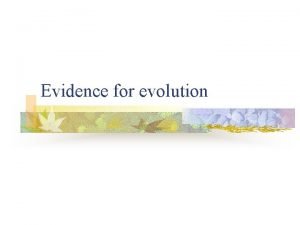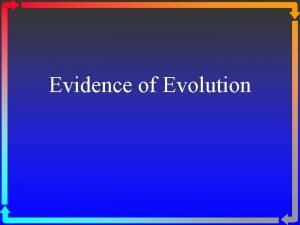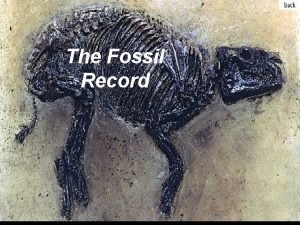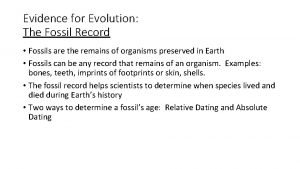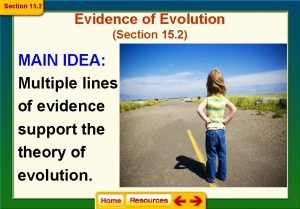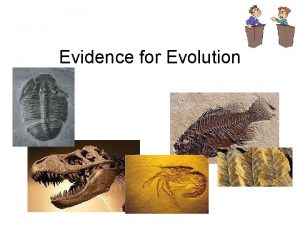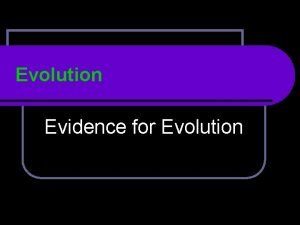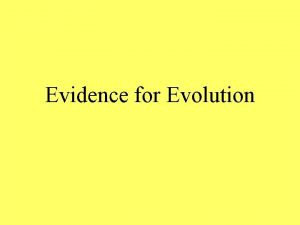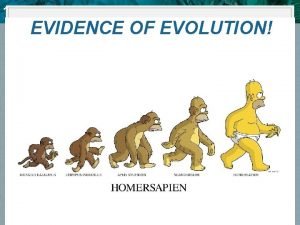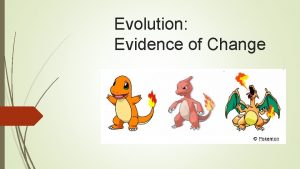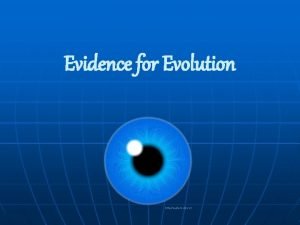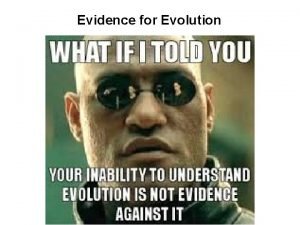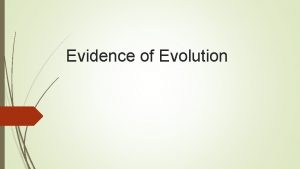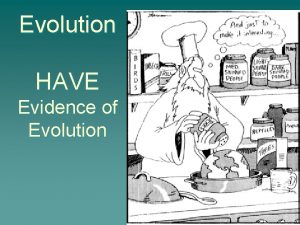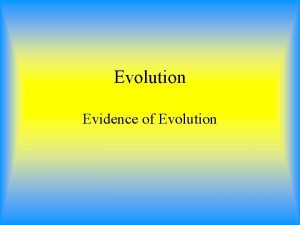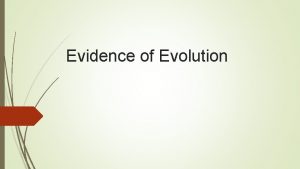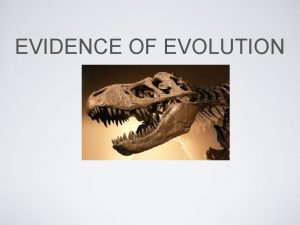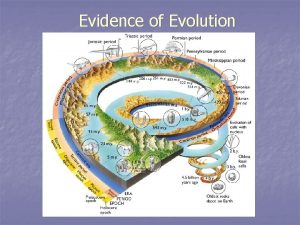15 1 Evidence for Evolution What is Evolution















- Slides: 15

15. 1 Evidence for Evolution

What is Evolution? • • The changing of species over generations. What kind of evidence formed the basis of early evolutionary concepts? FOSSIL Modern evolutionary theory is based on the ideas first published by?

Charles Darwin • What did he do on the HMS Beagle? • He was a naturalist, collecting samples of organisms from around the world and organized them based on their similarities.

Artificial Selection • Breeding organisms with specific traits to produce offspring with specific traits.

Natural Selection • A mechanism for change in populations. Occurs when organisms with favorable traits survive, reproduce and pass on their traits.

Mimicry • An adaptation that makes a species look like a more formidable one.

Camouflage • An adaptation that enables an organism to blend in with their surroundings.

Homologous Structures • Physical structures with a common evolutionary origin.

Analogous Structures • Physical structures that have the same purpose, but different origins.

Vestigial Structures • An structure that no longer has a purpose.

Peppered Moth Lab • In this lab we will see why diversity in a species is so beneficial and how it is necessary for the process of natural selection and evolution. • This lab will also show species are intertwined and can affect one another.

Becoming A Predator • • One person from each group will transform into a predator of Peppered Moths. Then we will time travel back to….

Manchester England 1845 • before the start of the Industrial Revolution. • How many Moths do you see?

Manchester England 1890

Food for Thought for our Predator Brains! • • How do you think your results would differ if you used a solid black background? Solid white? In modern day Manchester the Lichen is beginning to grow back on the trees, how do you think this will effect future generations of the Peppered Moth?
 Jobs vancouver
Jobs vancouver Class vs individual evidence
Class vs individual evidence Primary evidence vs secondary evidence
Primary evidence vs secondary evidence Are fibers class evidence ?
Are fibers class evidence ? Define ecological fallacy
Define ecological fallacy Primary evidence vs secondary evidence
Primary evidence vs secondary evidence Class vs individual evidence
Class vs individual evidence Primary evidence vs secondary evidence
Primary evidence vs secondary evidence Explain how class evidence can have probative value
Explain how class evidence can have probative value What is primary sources
What is primary sources Embryology evidence of evolution
Embryology evidence of evolution 4 types of evidence for evolution
4 types of evidence for evolution Evidence of evolution of remnants and impressions *
Evidence of evolution of remnants and impressions * What is evolution
What is evolution How amber is formed
How amber is formed Section 15-2 review theories of evolution
Section 15-2 review theories of evolution










